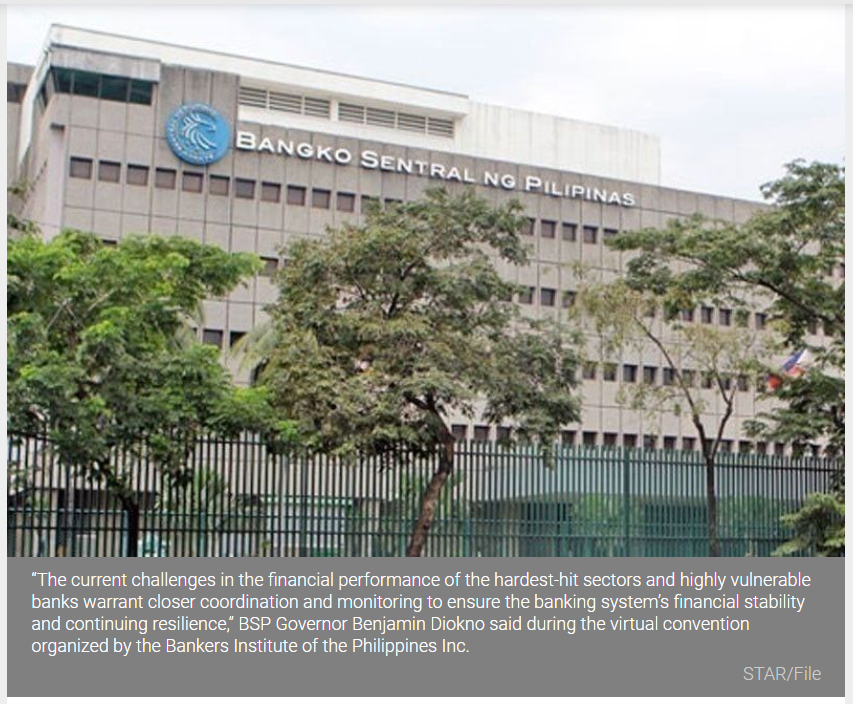Philippines: BSP monitoring vulnerable banks
MANILA, Philippines — The financial performance of the hardest-hit sectors and highly vulnerable banks needs closer monitoring as the non-performing loan (NPL) ratio of Philippine banks may climb further to exceed six percent this year amid the COVID-19 pandemic, according to the Bangko Sentral ng Pilipinas (BSP).
“The current challenges in the financial performance of the hardest-hit sectors and highly vulnerable banks warrant closer coordination and monitoring to ensure the banking system’s financial stability and continuing resilience,” BSP Governor Benjamin Diokno said during the virtual convention organized by the Bankers Institute of the Philippines Inc. (BAIPHIL).
The BSP believes the impact of the pandemic on the overall condition and performance of the banking system remains manageable despite the projected rise in the industry’s NPL ratio.
“The BSP estimates that the NPL ratio of the banking sector will remain manageable and will settle at slightly above six percent by end-December 2021,” Diokno said.
Latest data from the central bank showed the gross NPL ratio of banks rose for the third straight month to hit a fresh 11-year high of 4.21 percent in March from 2.25 percent in March last year as soured loans continued to soar amid the resurgence of COVID-19 infections.
Banks have been piling up NPLs or past due loan accounts where the principal or interest is unpaid for 30 days or more after due date, as well as bad debts due to the impact of the global health crisis.
“As to asset quality, indicators weakened but remained manageable,” Diokno said.
The BSP said the implementation of Republic Act 11523 or the Financial Institutions Strategic Transfer Act, which allows banks to efficiently dispose of their non-performing assets and NPLs through FIST corporations, would free up to P1.9 trillion worth of loans and reduce the industry’s NPL ratio from between 0.63 and 0.71 percentage points.
The earnings of Philippine banks fell by nearly 33 percent to P155 billion last year as the industry allocated higher provision for potential loan losses due to the impact of the pandemic on the capacity of borrowers to pay their loans.
Diokno said the central bank has conducted stress test exercises and ad hoc simulations to assess the banking system’s resiliency amid the COVID-19 crisis.
“Overall, the results reinforce that the banking system is reasonably well-capitalized and could continue lending to support the economy,” he said.
The risk-based capital adequacy ratio of the universal and commercial banking industry in end-2020 on solo and consolidated bases stood at 16.6 percent and 17.1 percent, respectively and well above the minimum thresholds set by the BSP and the Bank for International Settlements (BIS).
Likewise, the liquidity coverage ratio and net stable funding ratio of big banks remained higher than the minimum 100 percent threshold, indicating the industry’s ability to fund requirements during short- and long-term liquidity shocks.
For smaller banks such as the stand-alone thrift banks, rural banks and cooperative banks, the minimum liquidity ratios surpassed the 20 percent minimum.
“The Philippine banking system is sound and stable as shown by sustained growth in assets, strong capital position, adequate liquidity buffers, ample loan loss reserves, and profitable operations,” Diokno said.
Source: https://www.philstar.com/business/2021/05/25/2100545/bsp-monitoring-vulnerable-banks


 English
English




